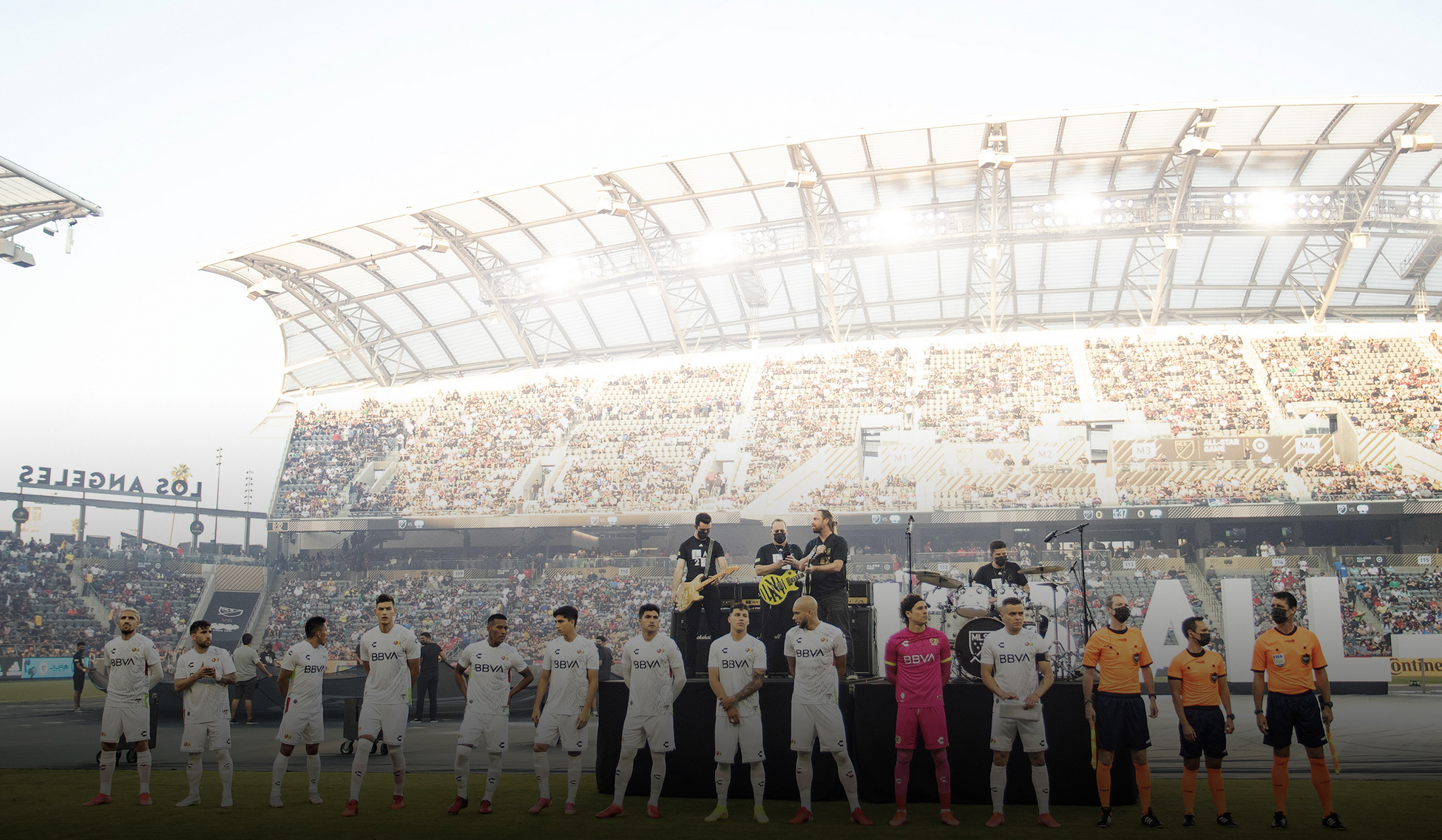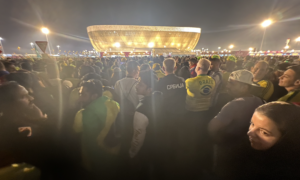There was something oddly appropriate about Ricardo Pepi securing the game-winning moment for the MLS All Stars over Liga MX’s All Stars on Wednesday night.
In an event that highlighted another significant step forward in Liga MX/MLS collaborations, it was fitting that the victory was decided by a young Mexican-American striker in MLS that spent his childhood watching Liga MX every weekend.
Unfazed about going up against Nahuel Guzman — a Tigres goalkeeper he likely followed while growing up — Pepi ended the 1-1 All Star Game stalemate that went to penalties with a powerful shot that smashed off the top crossbar and into the back of the net.
With a 3-2 scoreline in MLS’ favor in the penalty shootout, Pepi solidified the win and immediately embraced his teammates who were impressive against Liga MX’s marquee players.
Banc of California Stadium, which hosted the sold-out match, erupted into a frenzied mixture of celebrations from MLS supporters and jeers from Liga MX fans in attendance.
It was thrilling to watch it all unfold. Months if not years of planning went into the spectacle, and for many, the All-Star event seems like a climactic point in the recent partnership between MLS and Liga MX.
And yet, looking ahead, something like the All-Star Game is just the beginning of a new era for both leagues.
We’ve seen the two come together in previous projects, but when looking at the most recent partnership between MLS and Liga MX, 2018 is the best place to start.
Months after the soccer federations from Mexico, the United States and Canada officially joined forces to announce a bid for the 2026 World Cup, those in charge of MLS and Liga MX looked to garner further attention through a newfound alliance.
In early 2018, an annual Campeones Cup — which pits Liga MX and MLS champions against one another in a one-off match — was announced. By 2019 the creation of the single-elimination Leagues Cup followed and on Wednesday night, we witness the inaugural aforementioned MLS vs Liga MX All-Star Game.
So what’s next? Or perhaps most importantly, are all signs pointing towards a potential unified North American “super league” between the two?
Some higher-ups from both leagues haven’t shied away from discussing the possibility of it happening.
“It’s probable that the possible creation of a North American super league is best for MLS in the short term and for Liga MX in the medium term, but over the long term it is best for both,” said Alejandro Irraragori last year, who owns Liga MX sides Atlas and Santos.
In early 2020, MLS Commissioner Don Garber also stated that it would be an “ultimate dream” to have a potential combined league.
There could be plenty of intrigue from players as well.
In a recent interview with FutMexNation, former Liga MX and MLS star Herculez Gomez discussed the player perspective on some of these collaborations.
“I think there’s a lot of interest and curiosity from both sides,” said Gomez. “I think a lot of players here in Major League Soccer have seen how massive Liga MX is.”
“And I do think there’s a huge amount of curiosity when it comes to the amount of Liga MX players who are interested in experiencing what Major League Soccer is about. I know this because I get phone calls every six months from players who have questions,” he added.
If that intrigue continues to grow and if both leagues continue to work together through more projects like the All-Star Game, will the Super League soon follow?
That’s all easier said than done.
Both MLS and Liga MX are somewhat infamous for their idiosyncratic rules, which would be a logistical nightmare for either one to alter. Promotion and relegation was recently halted in Liga MX, but there are plans to bring it back in the near future — which could make things complicated with an MLS structure that has no pro/rel.
Aside from making room for 45+ combined teams, there’s also the issue with travel. MLS teams already deal with lengthy distances in the United States and Canada. Throw Mexico into the mix and you’ll have some headache-inducing travel time for games.
Not all ownership, especially in MLS, might be on board with a super league either. Club valuations have shown significant growth in MLS through a single entity structure with no pro/rel. How would that change if both leagues joined? What impact would there be if smaller Liga MX teams with lower valuations were brought in?
“If you’re a Major League Soccer owner and you’re going into a potential fusion…you want to be guaranteed of certain things,” noted Gomez.
“Will this be a non pro/rel type of deal? Will my money increase/decrease at what structure? What about the people I’m going into bed with, these other potential ownership groups. How secure are they?”
These are legitimate concerns. No matter how fascinating it would be to have a cross-border league that would expand through the North American continent, we might not reach a point in which we have a full-fledged super league.
In recent days, Garber himself seems to have backtracked on the Super League idea. While being interviewed on Fox Sports during the All-Star Game, MLS’ Commissioner denied the idea of a full merger and stated that he thinks you can “get the benefits of a merger without having to sort of go through that process with unions and structure.”
“You get a great All-Star Game, you expand the Leagues Cup, you have Campeones Cup. You have so many different programs that deliver all of that value for our fans,” he added.
We probably won’t get that Super League, but nonetheless, collaborations will continue to be vital for both sides.
In an interesting interview earlier this month with Goal.com, Liga MX President Mikel Arriola discussed the importance of the economy north of the border and stated that Liga MX must “grow hand in hand with MLS” to keep up in the labor market of players.
Recognizing the benefit of working together and thereby also stealing more of the global and regional spotlight, the lines will continue to blur in North American soccer through events seen in recent years.
In preparation for the 2026 World Cup, it also makes sense as to why all involved would want to continue the theme of collaborations and unification that can help push both MLS and Liga MX into the next level.
And even if that falls just short of a Super League, there won’t be any lack of matches like Wednesday’s All-Star Game that brings together the two soccer cultures that are growing closer with each passing day.
Comments








